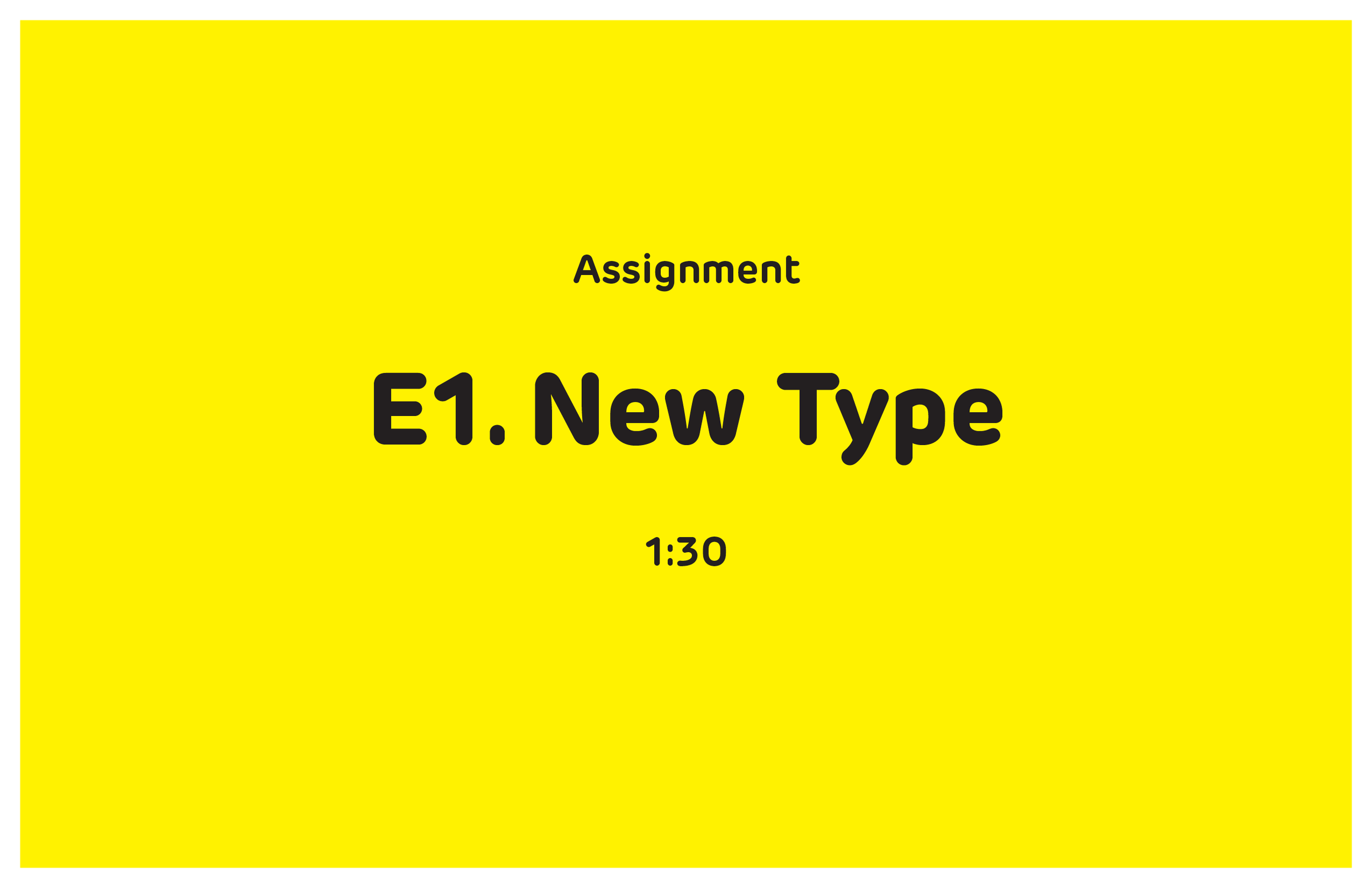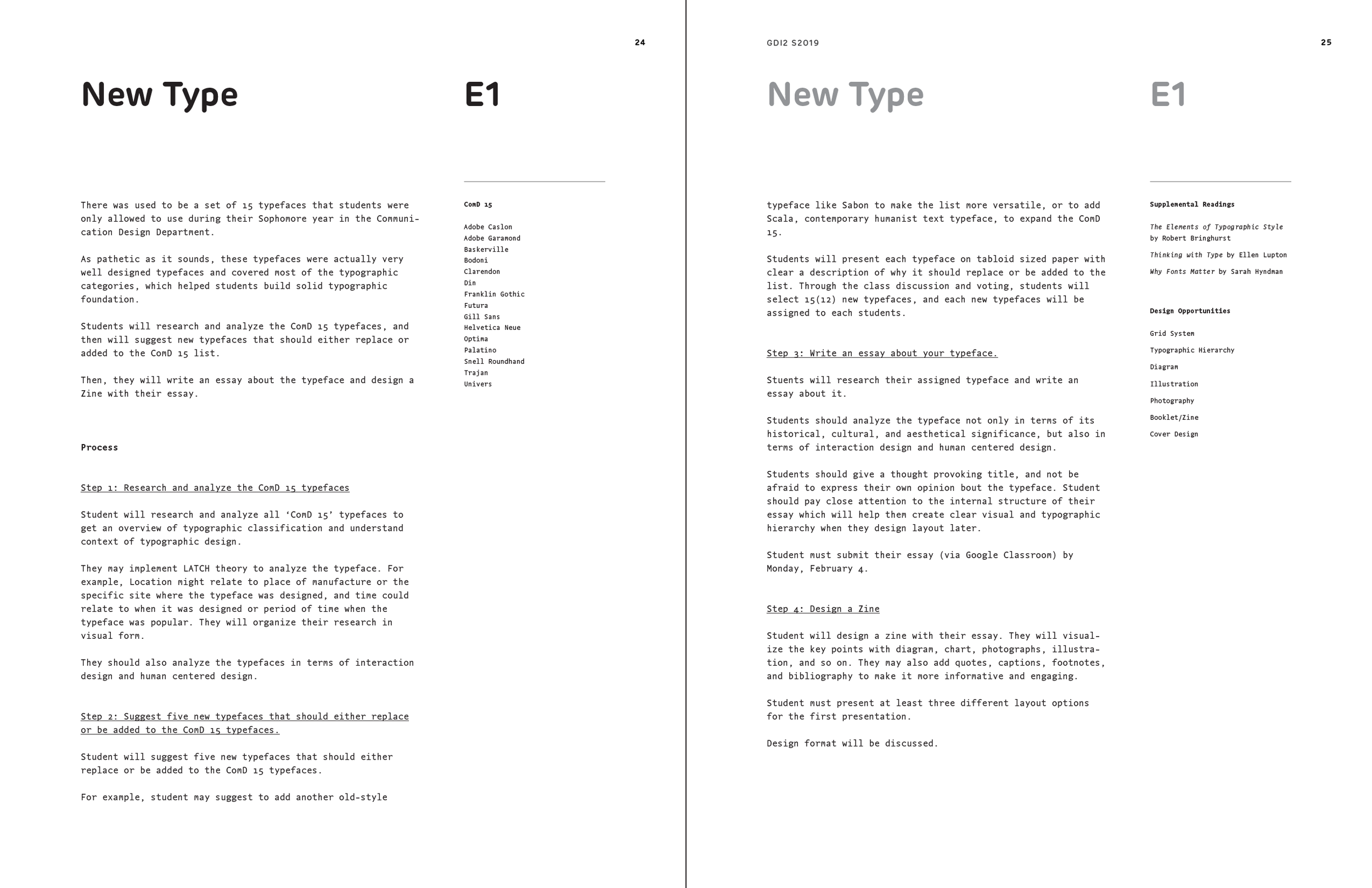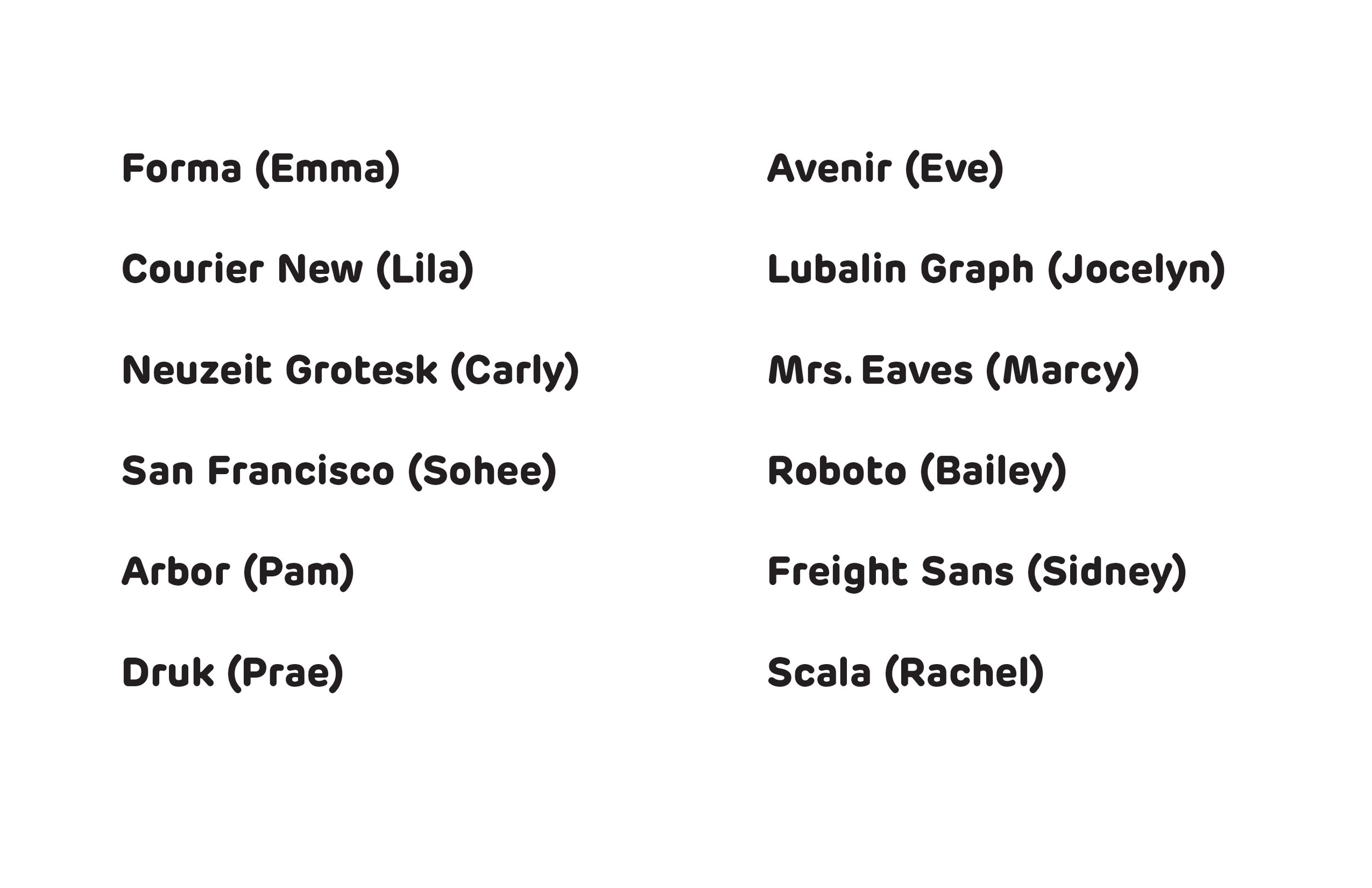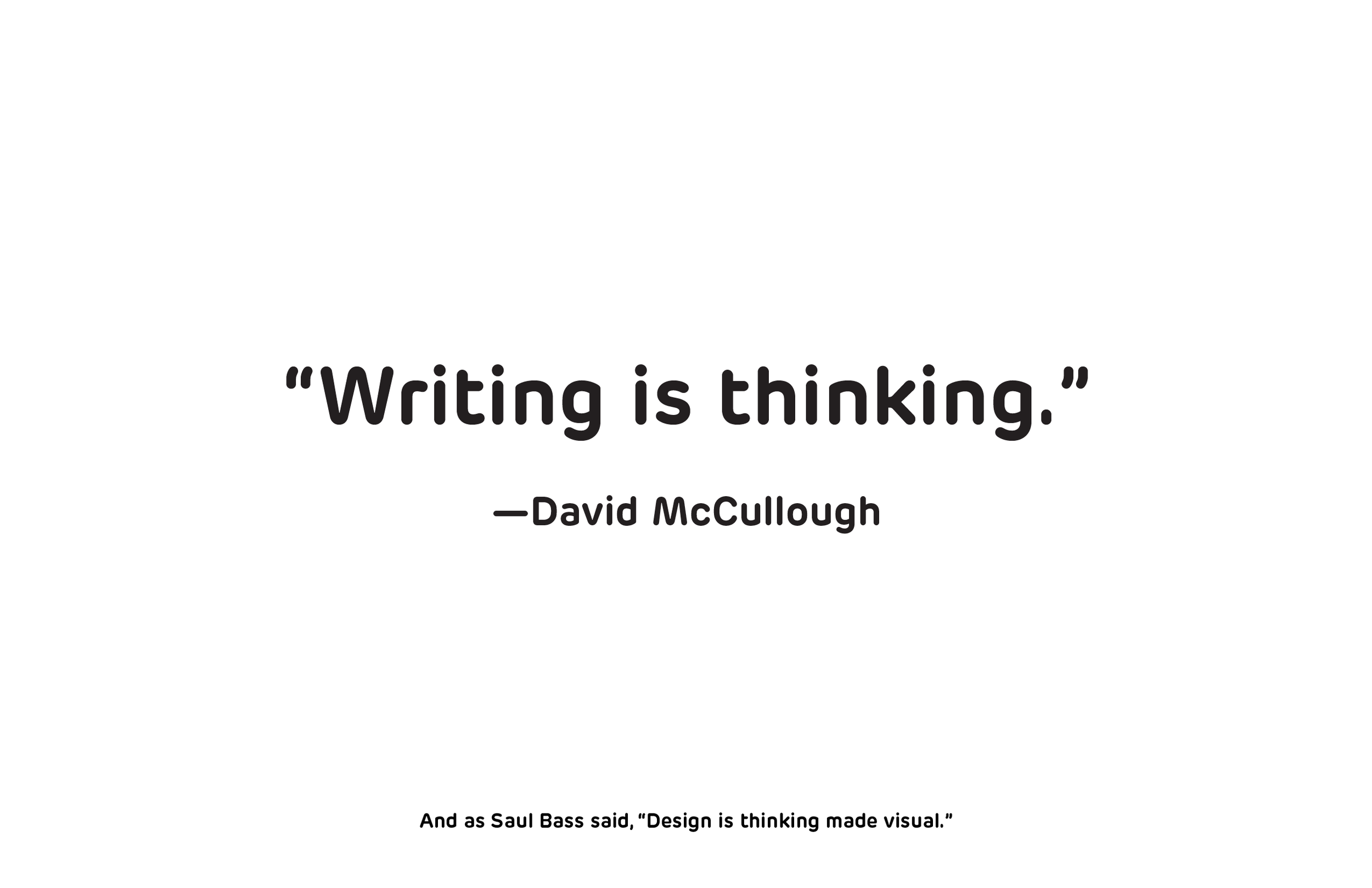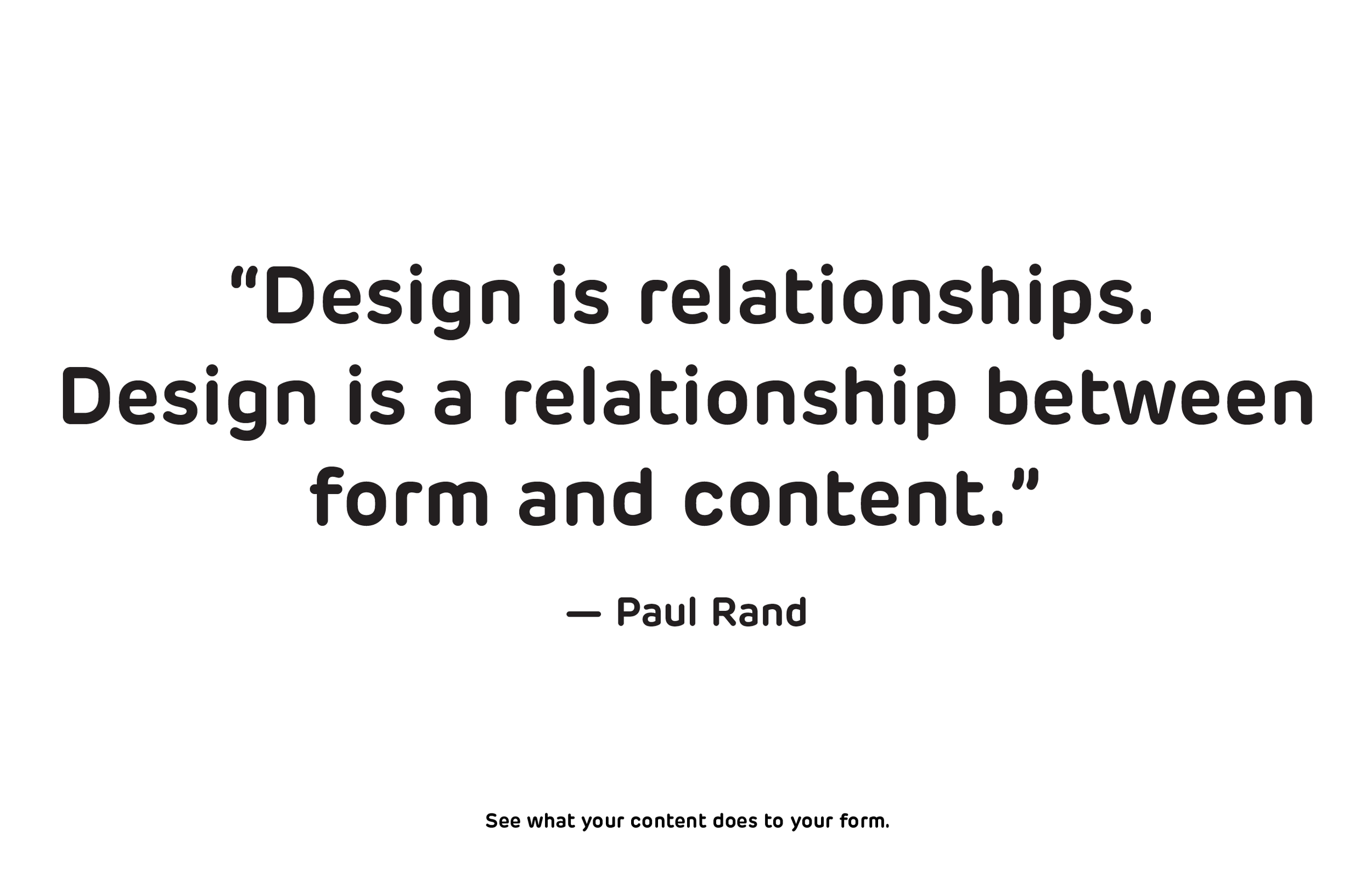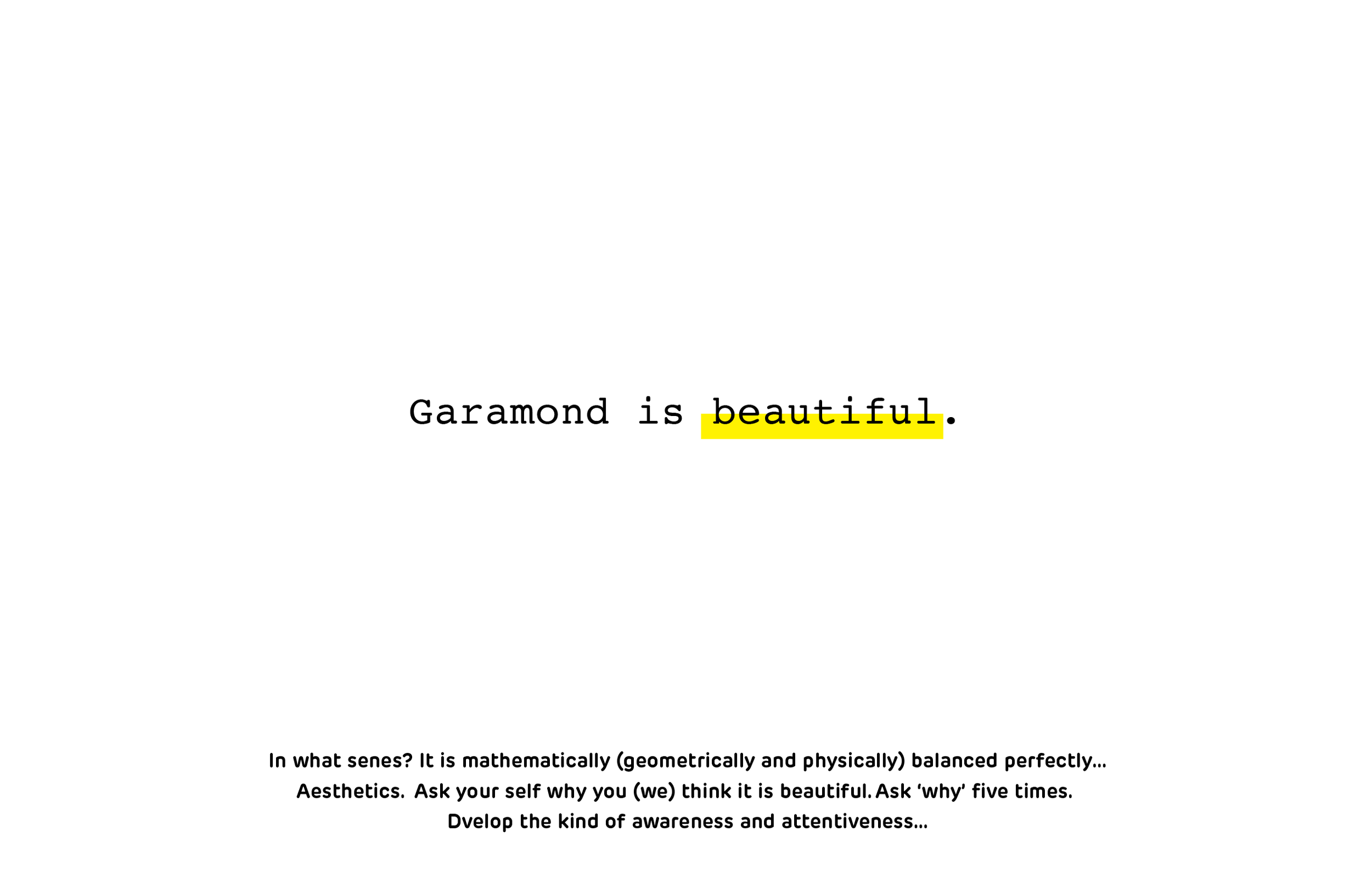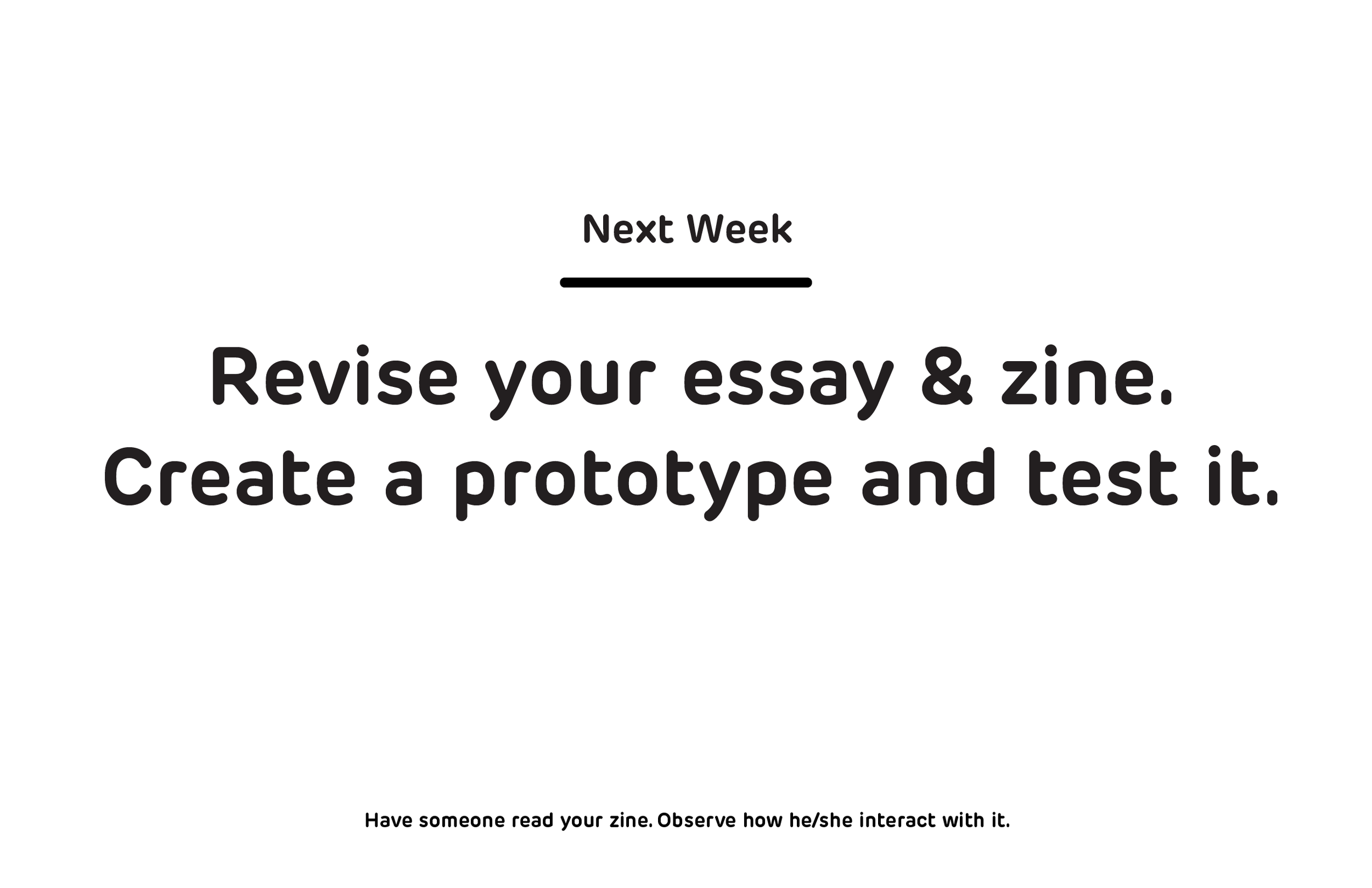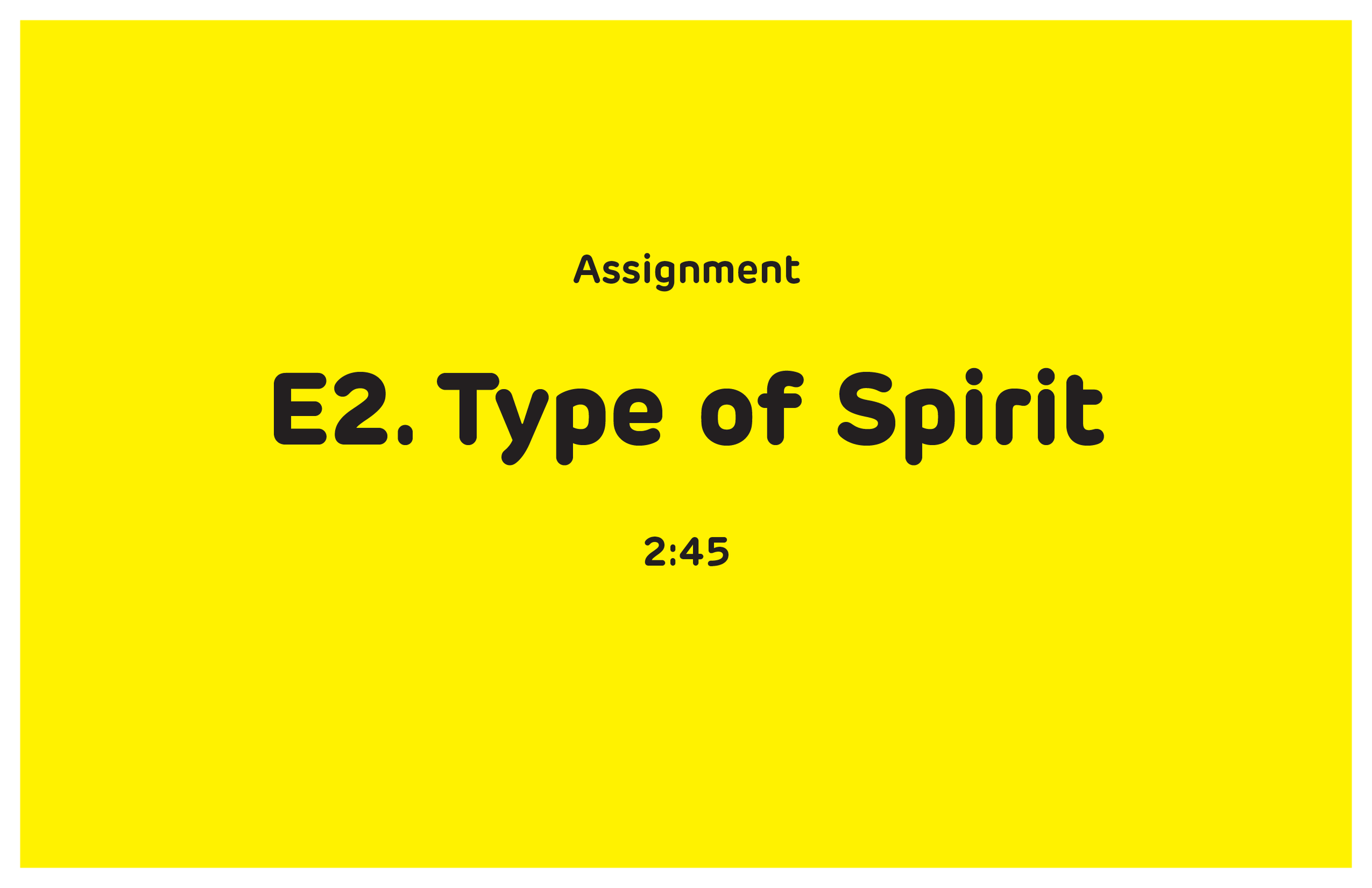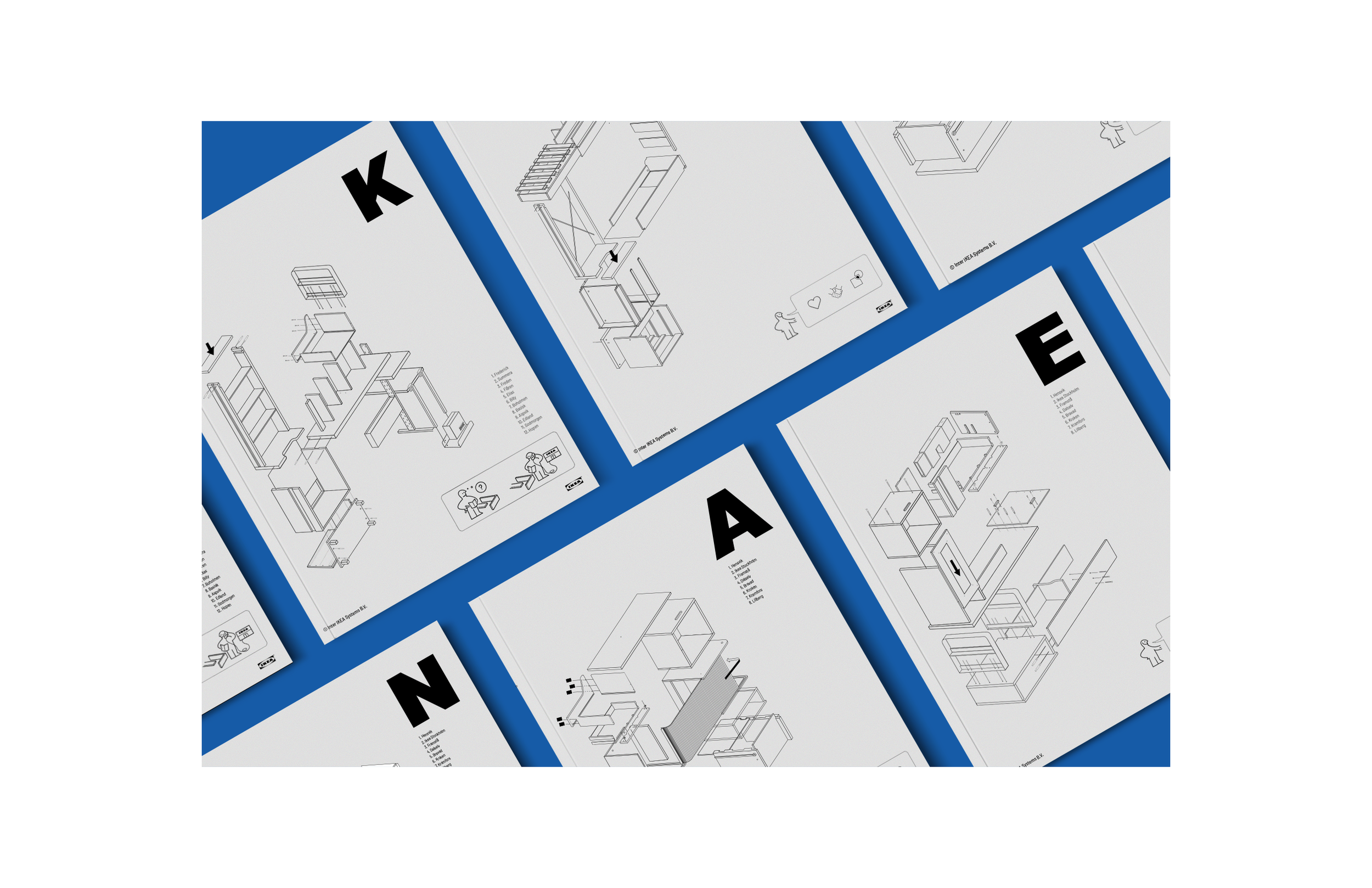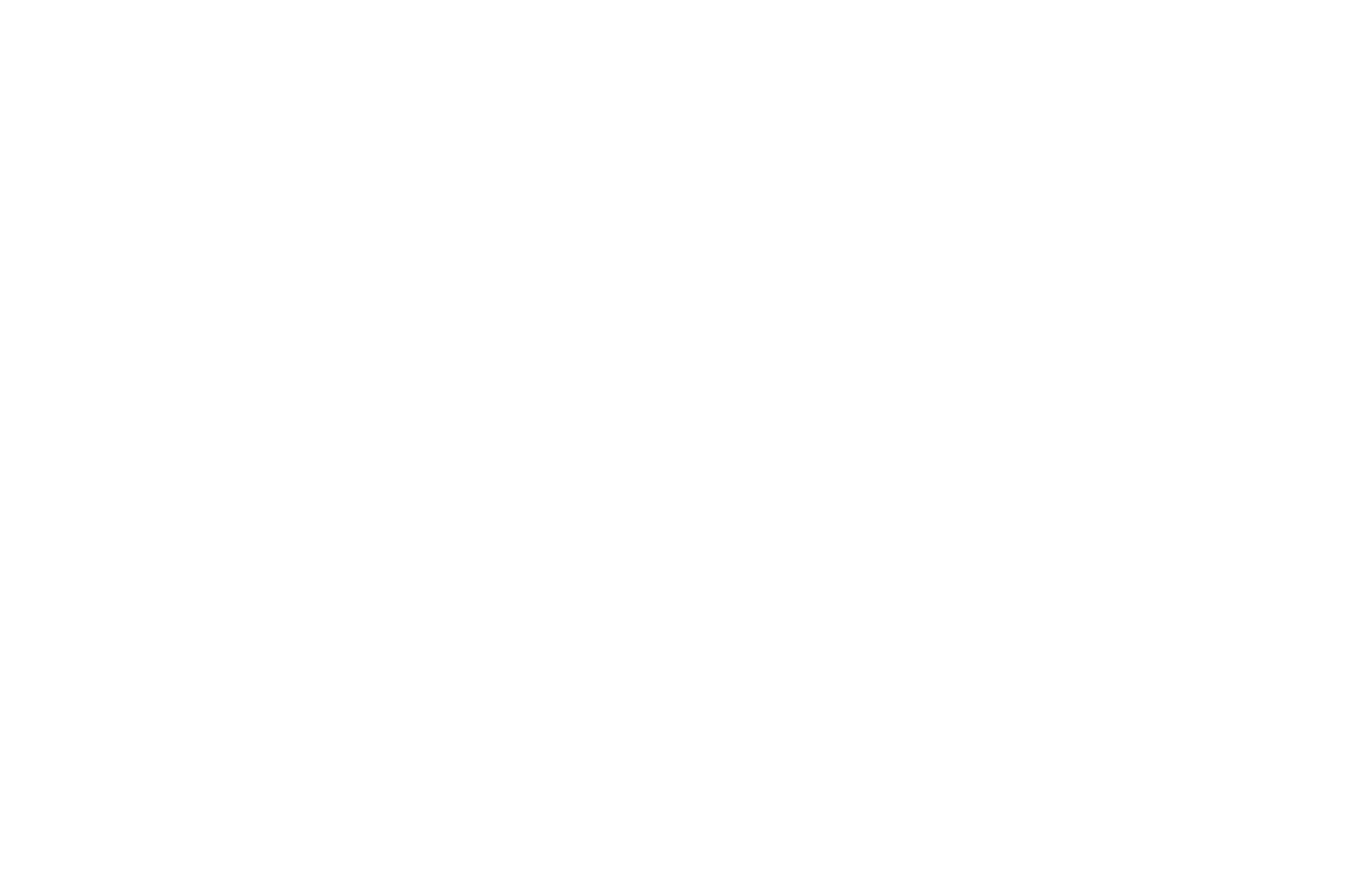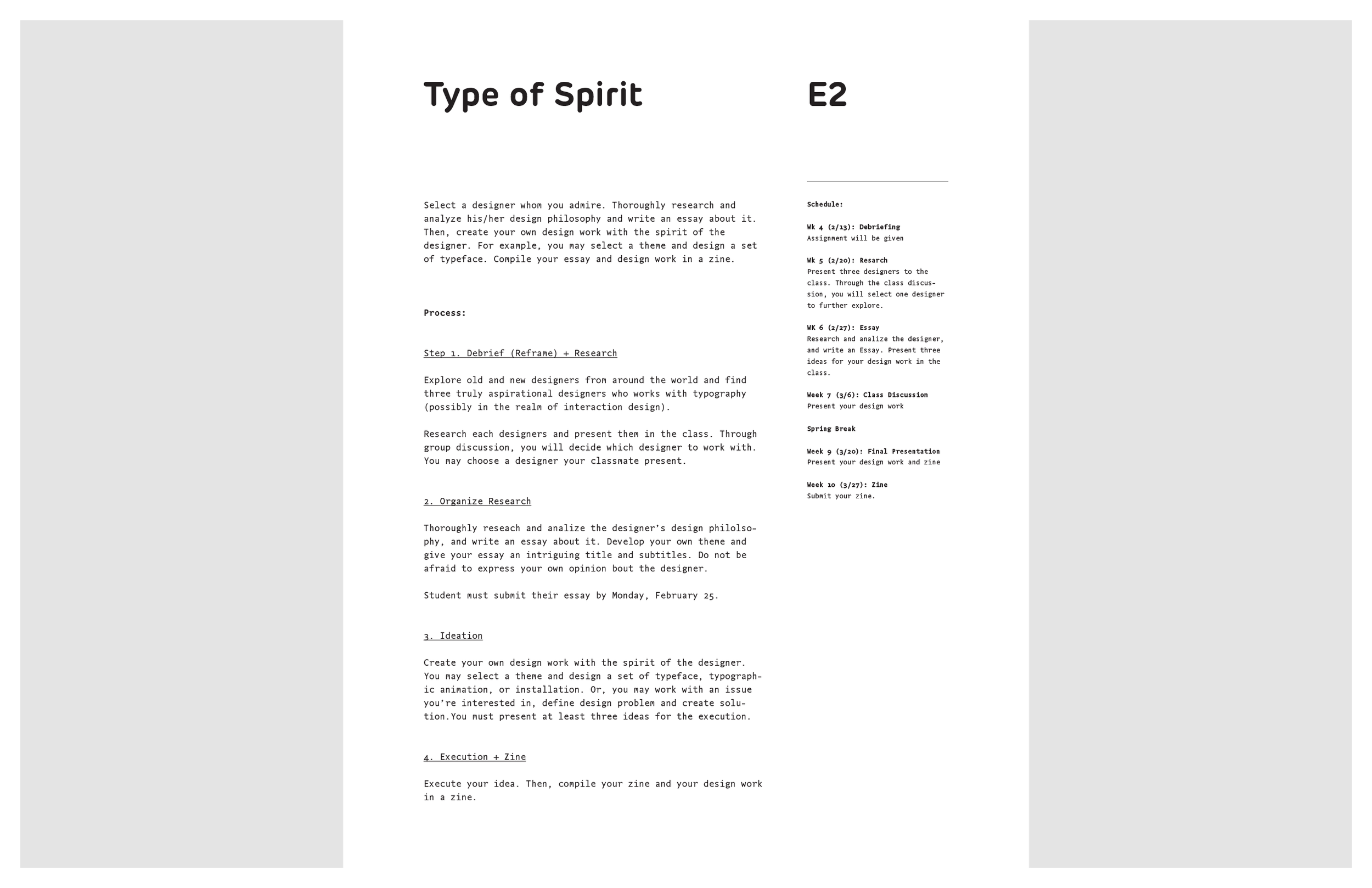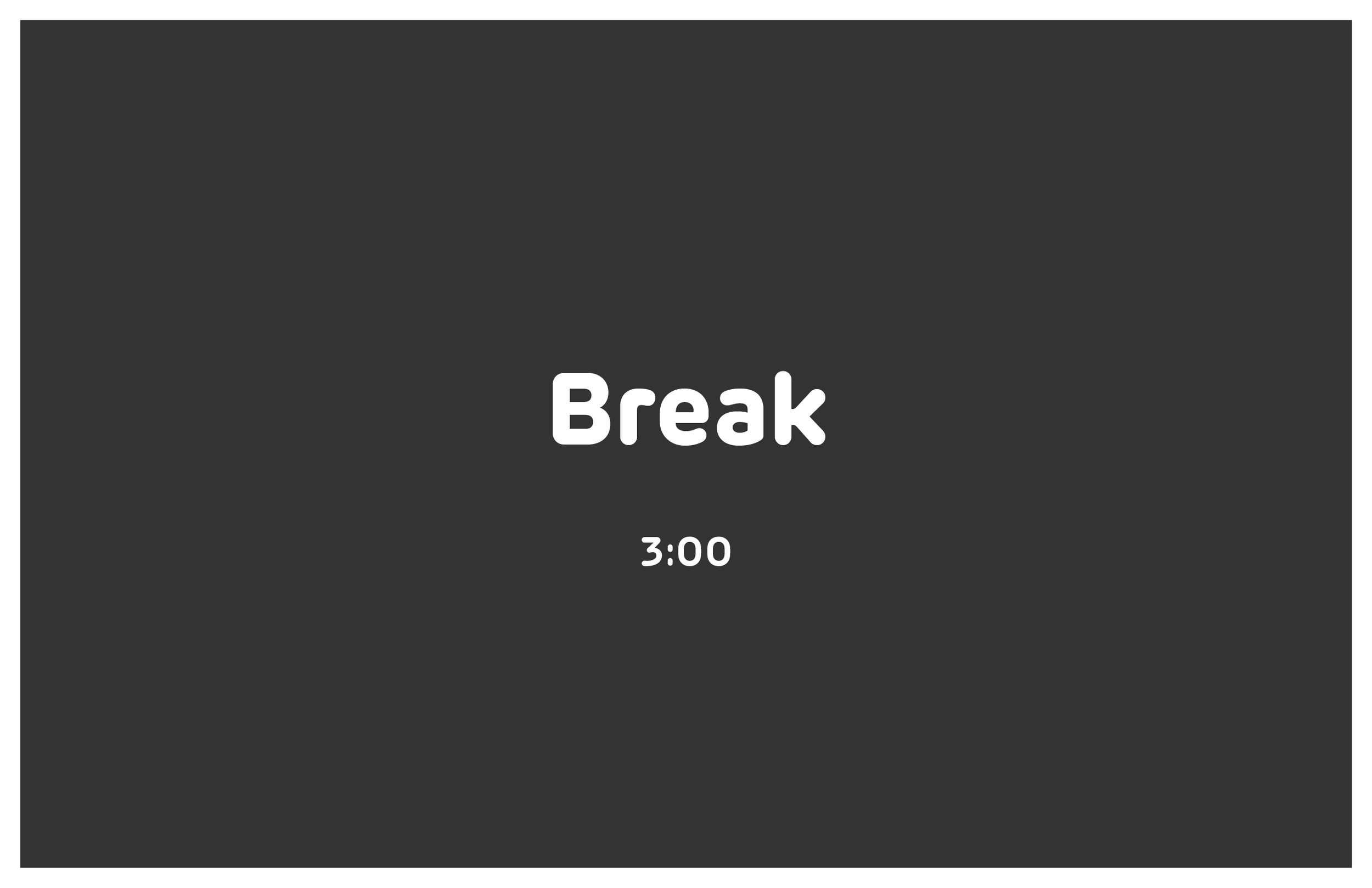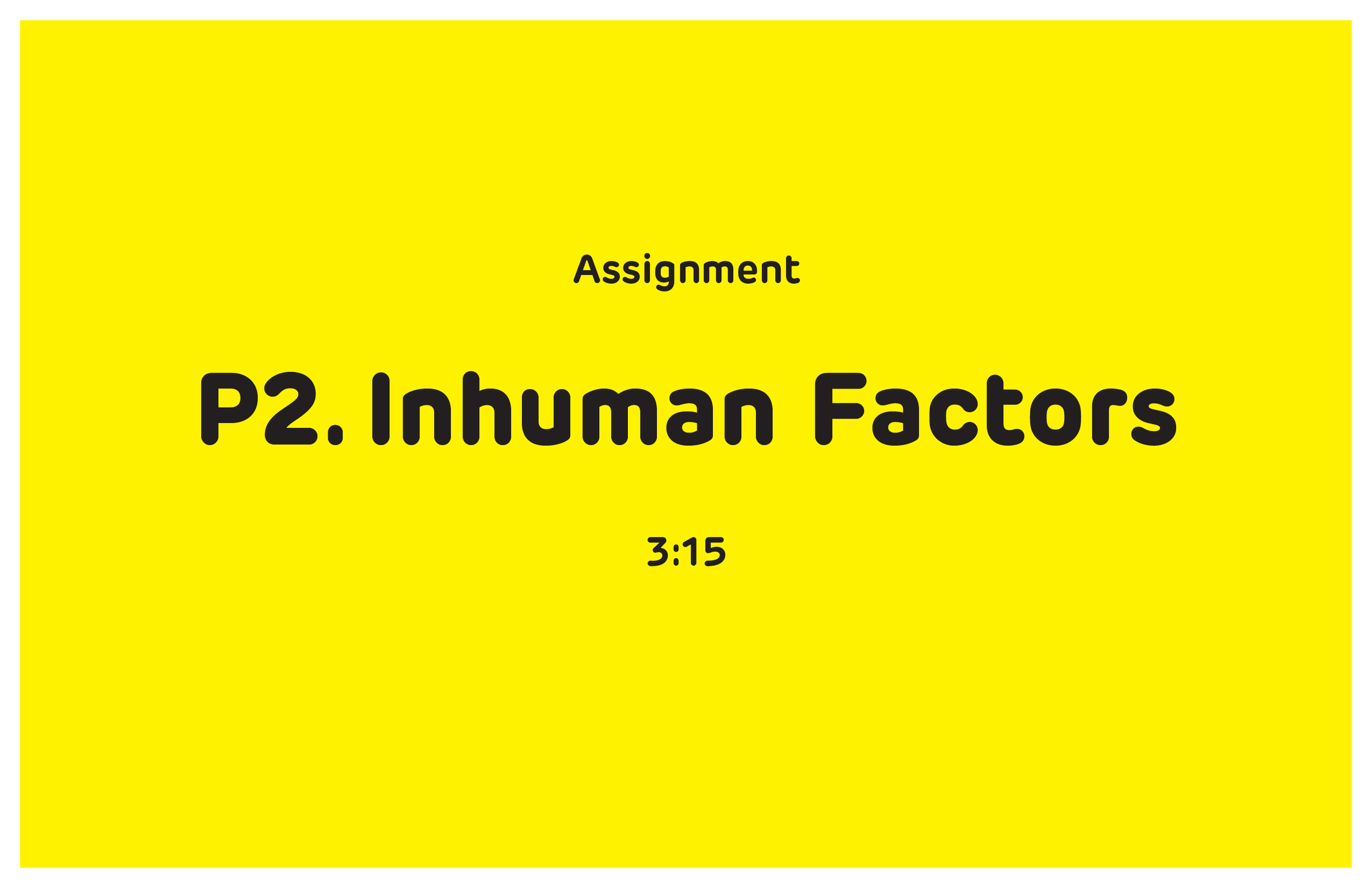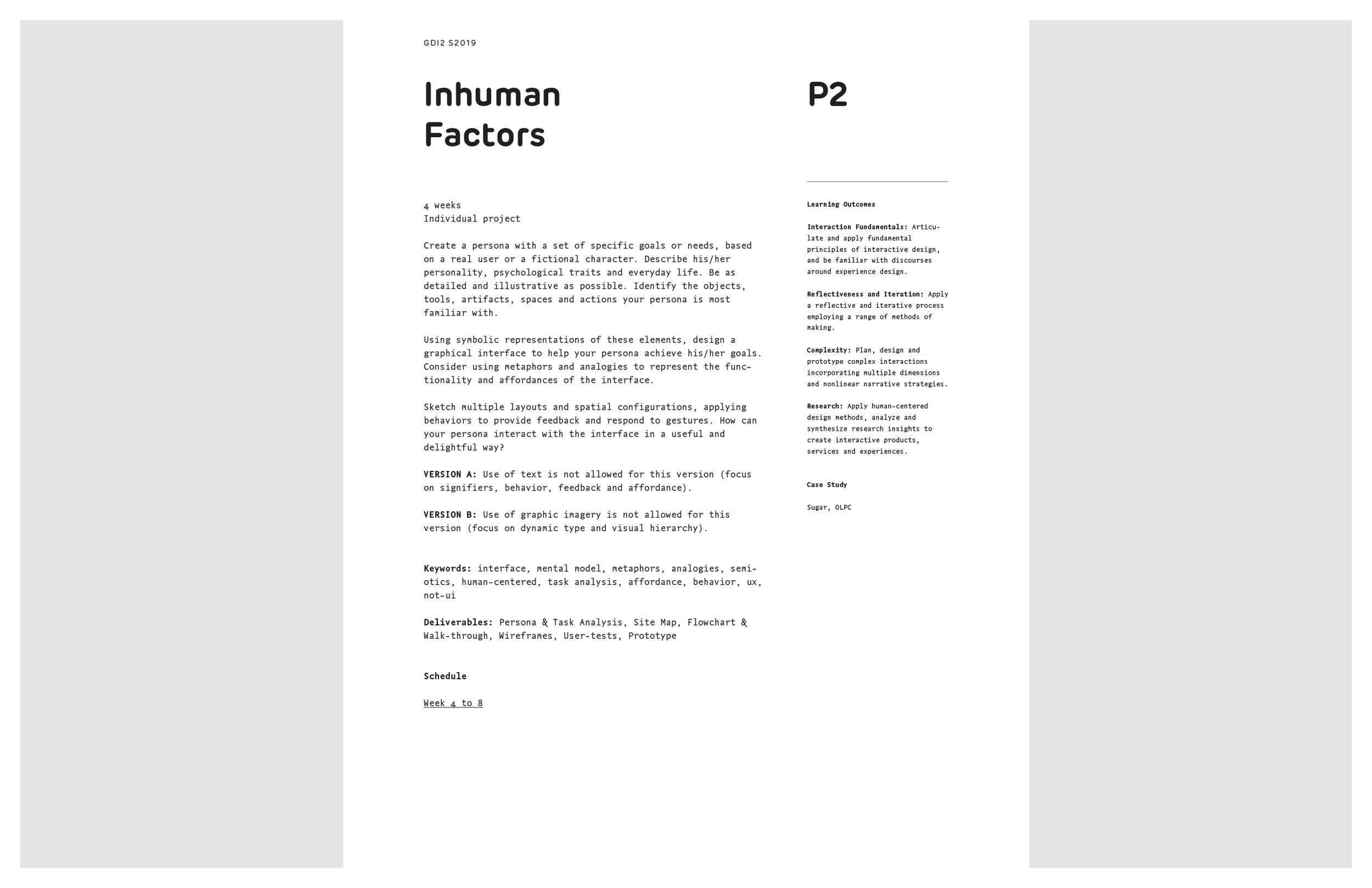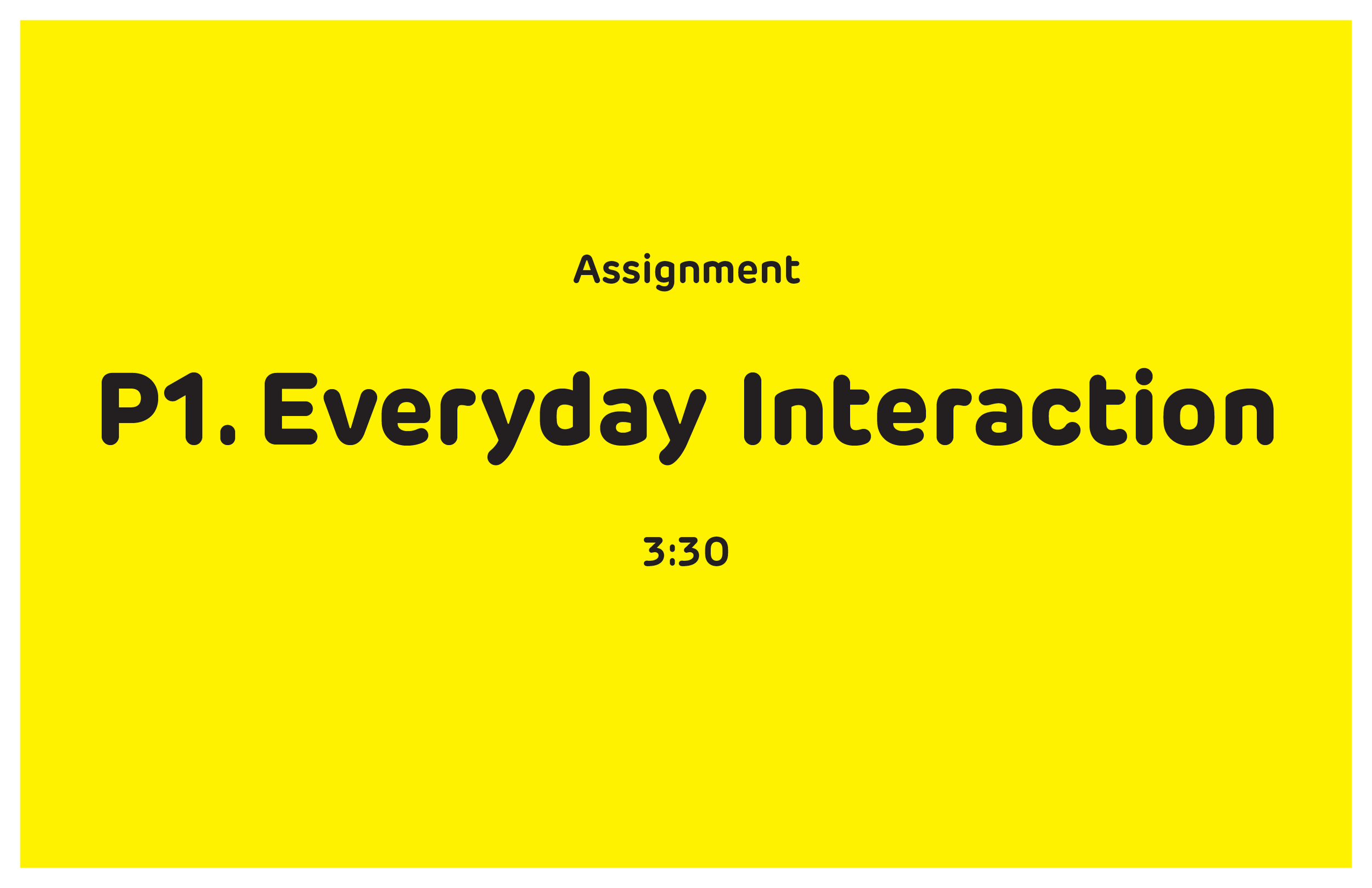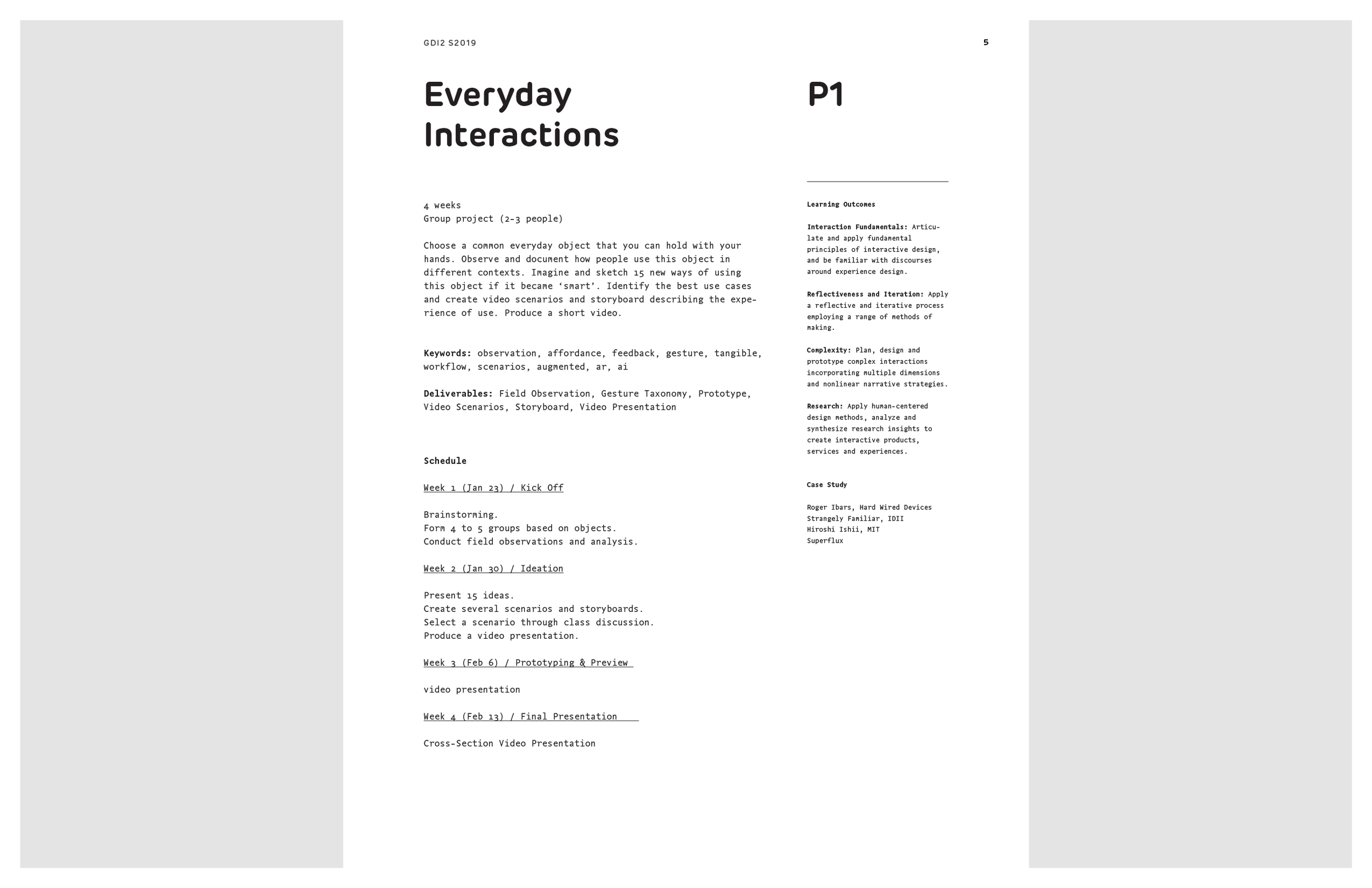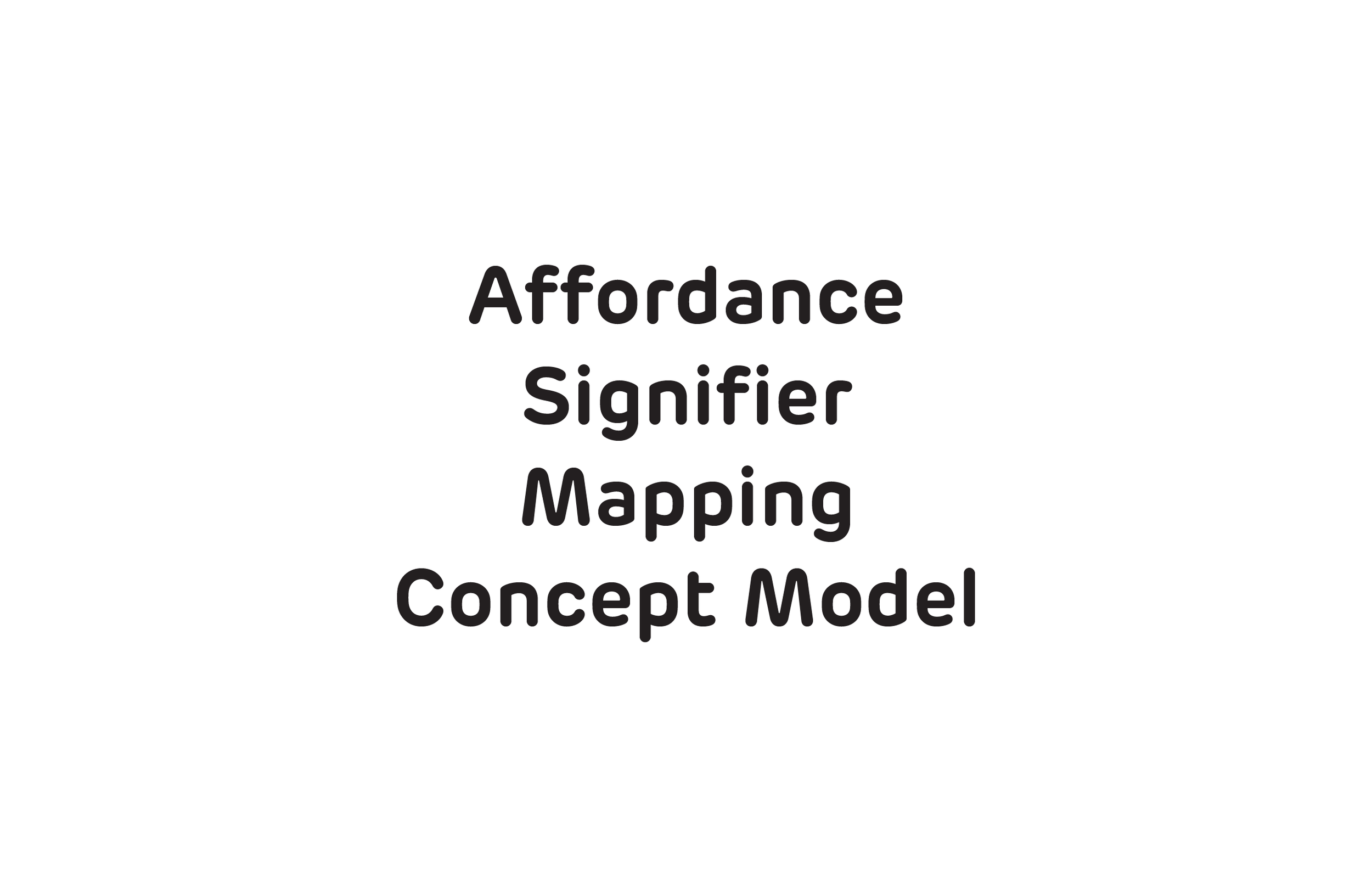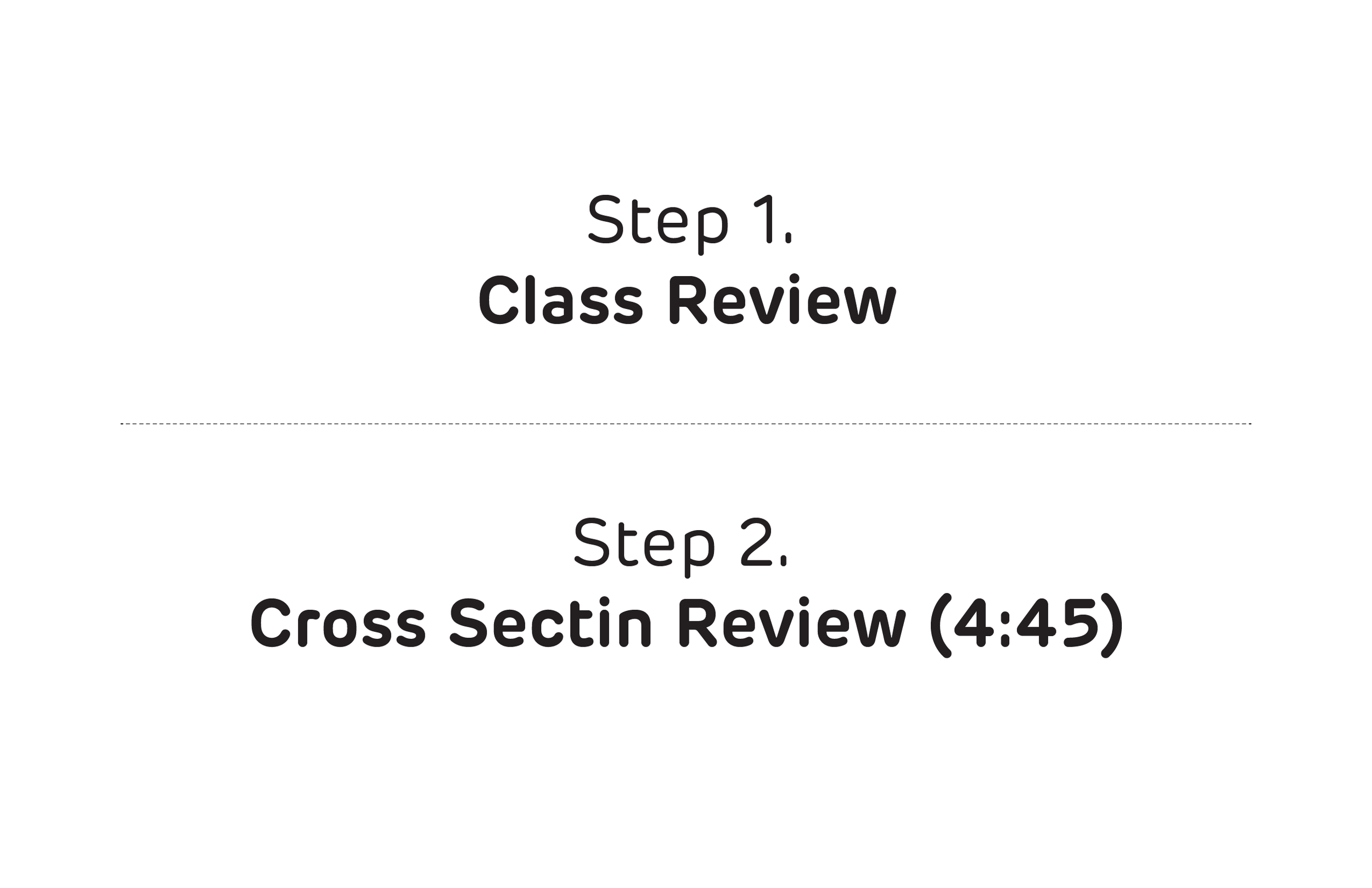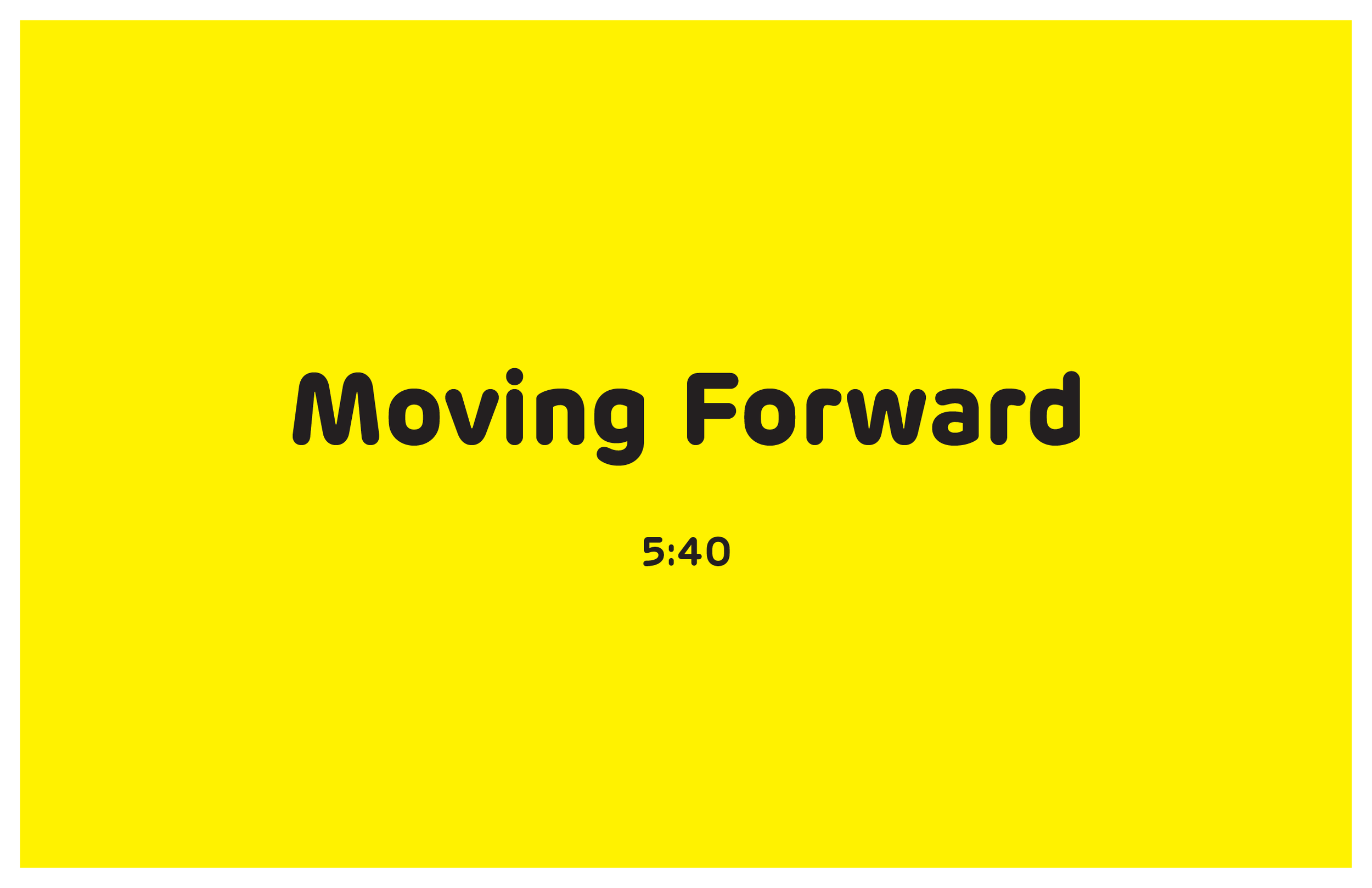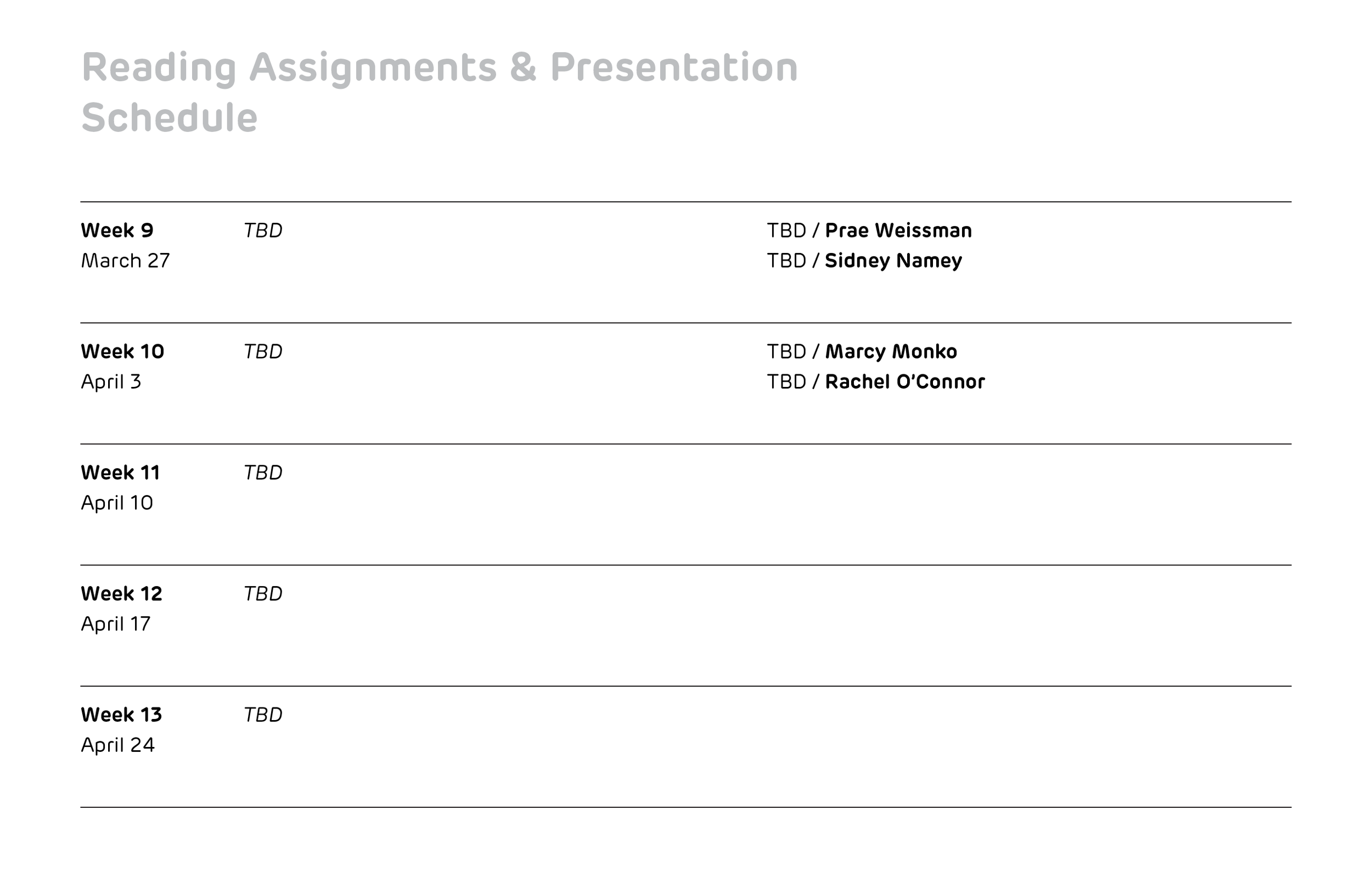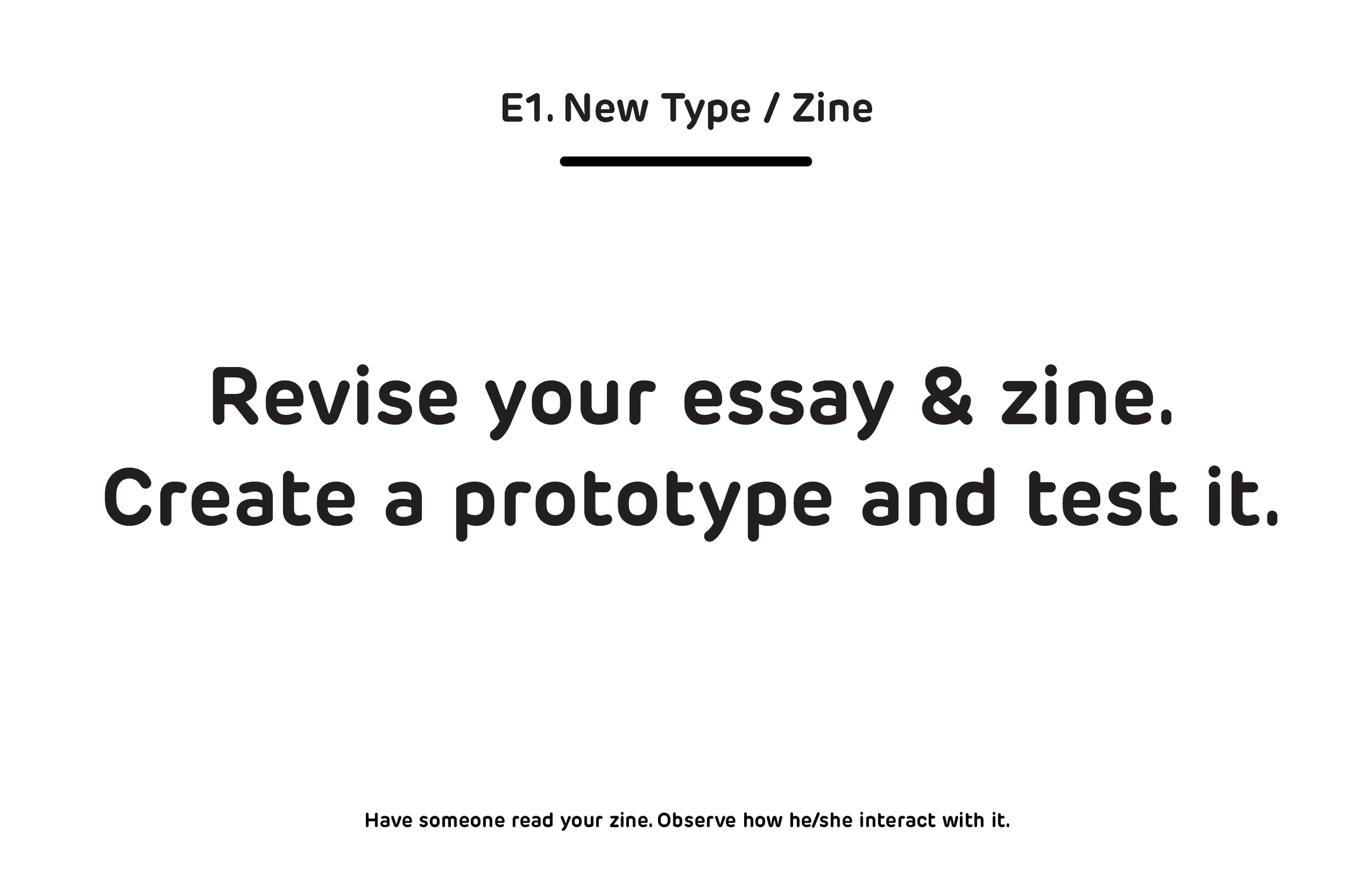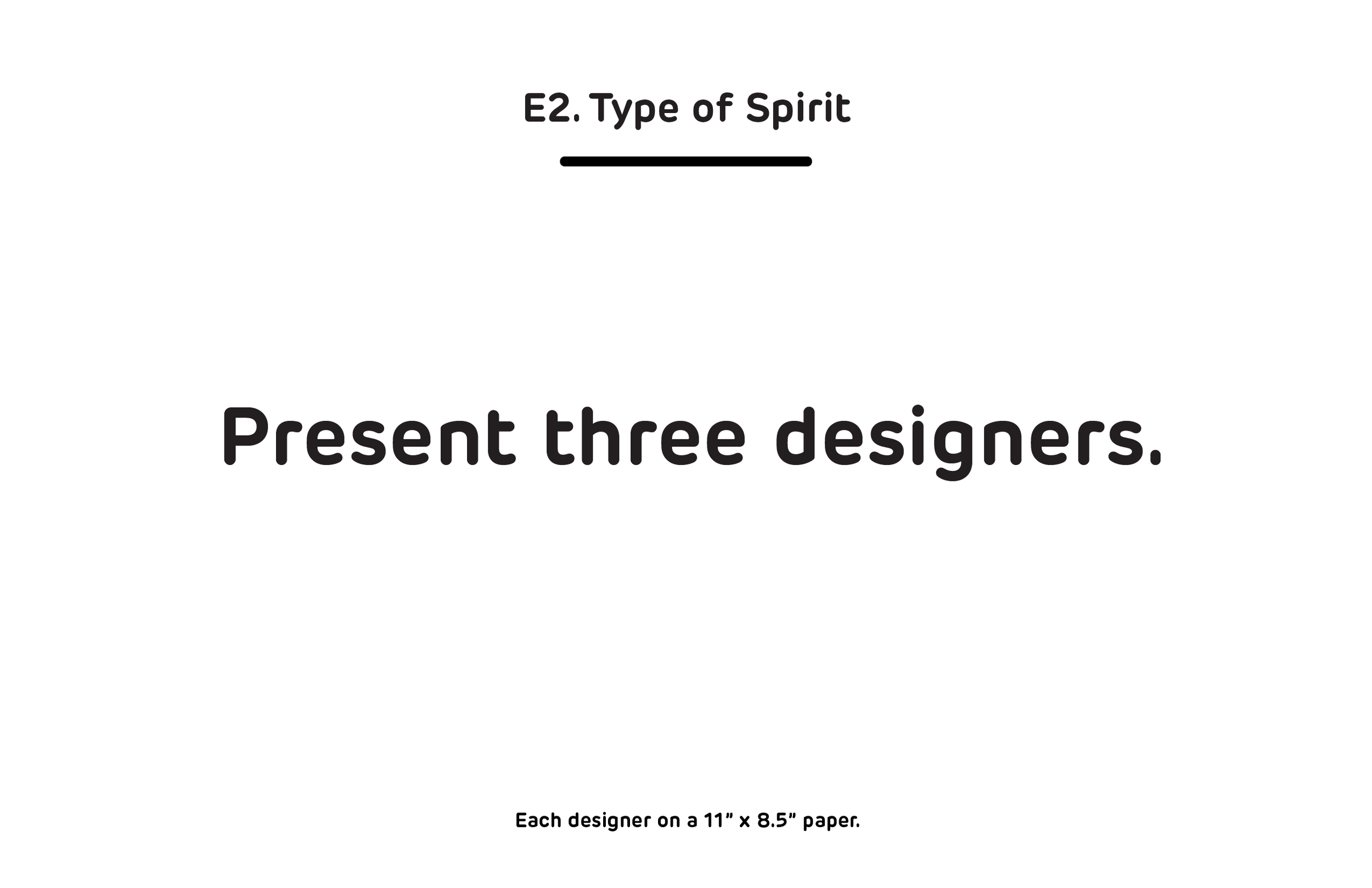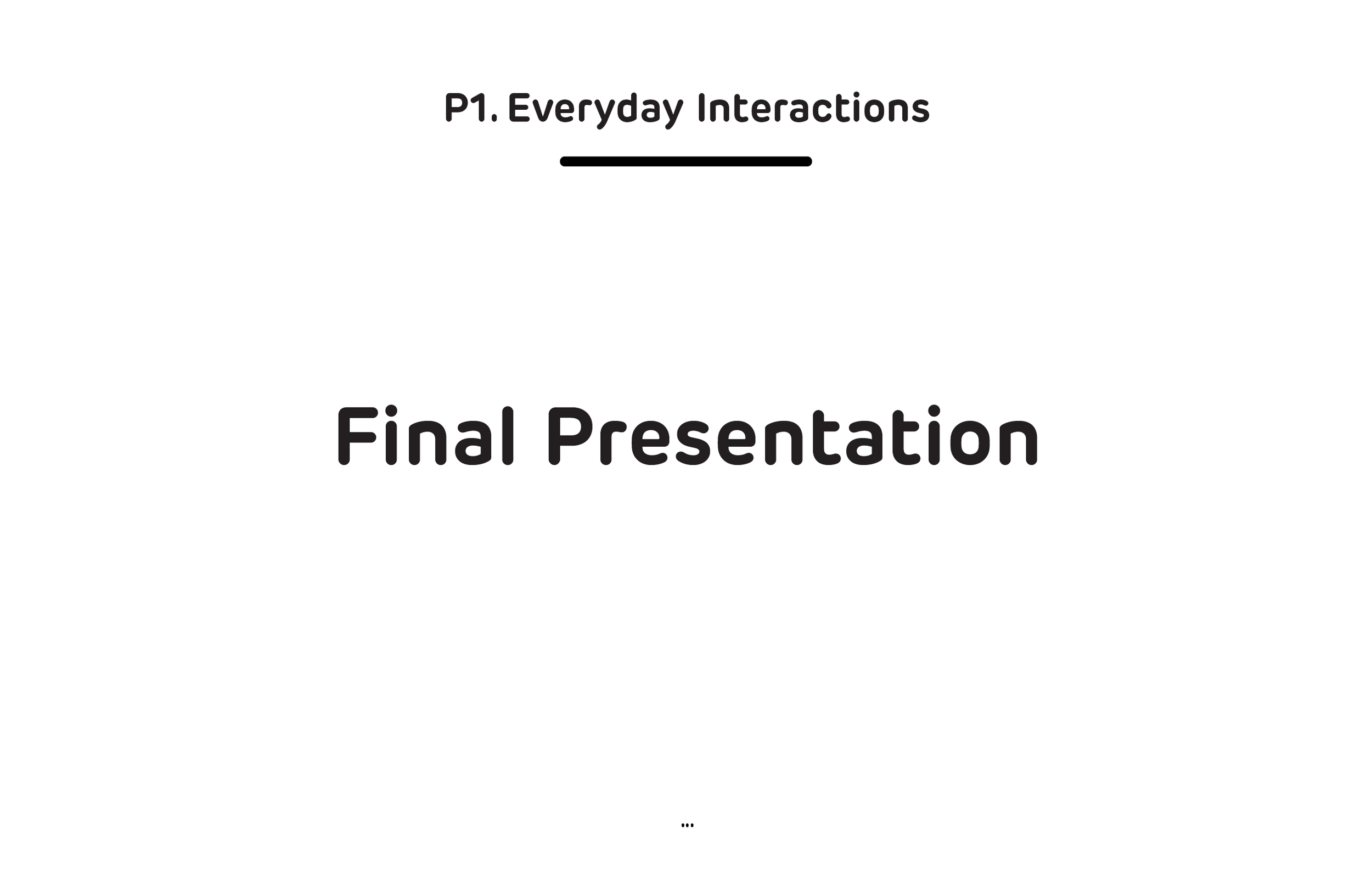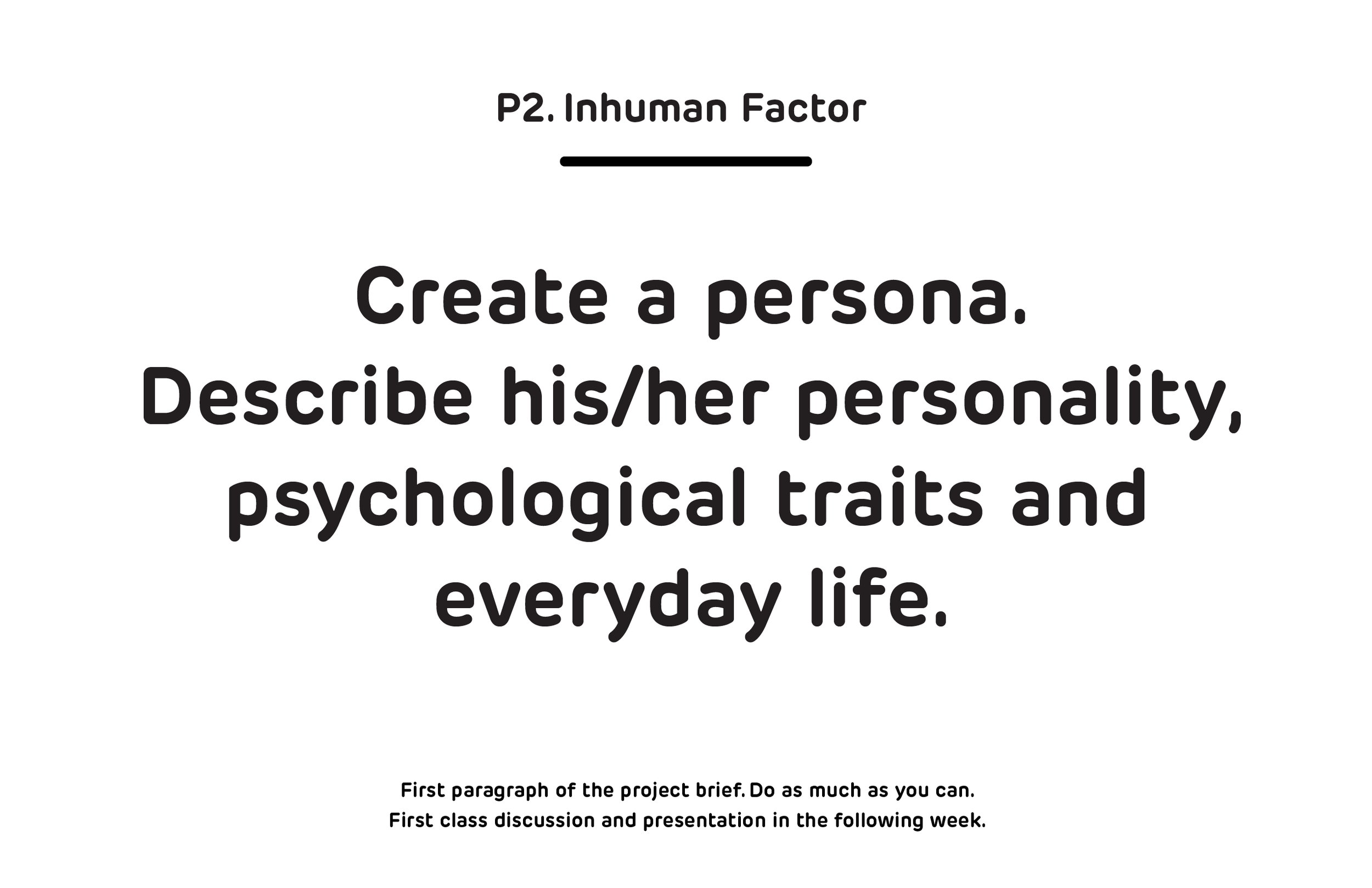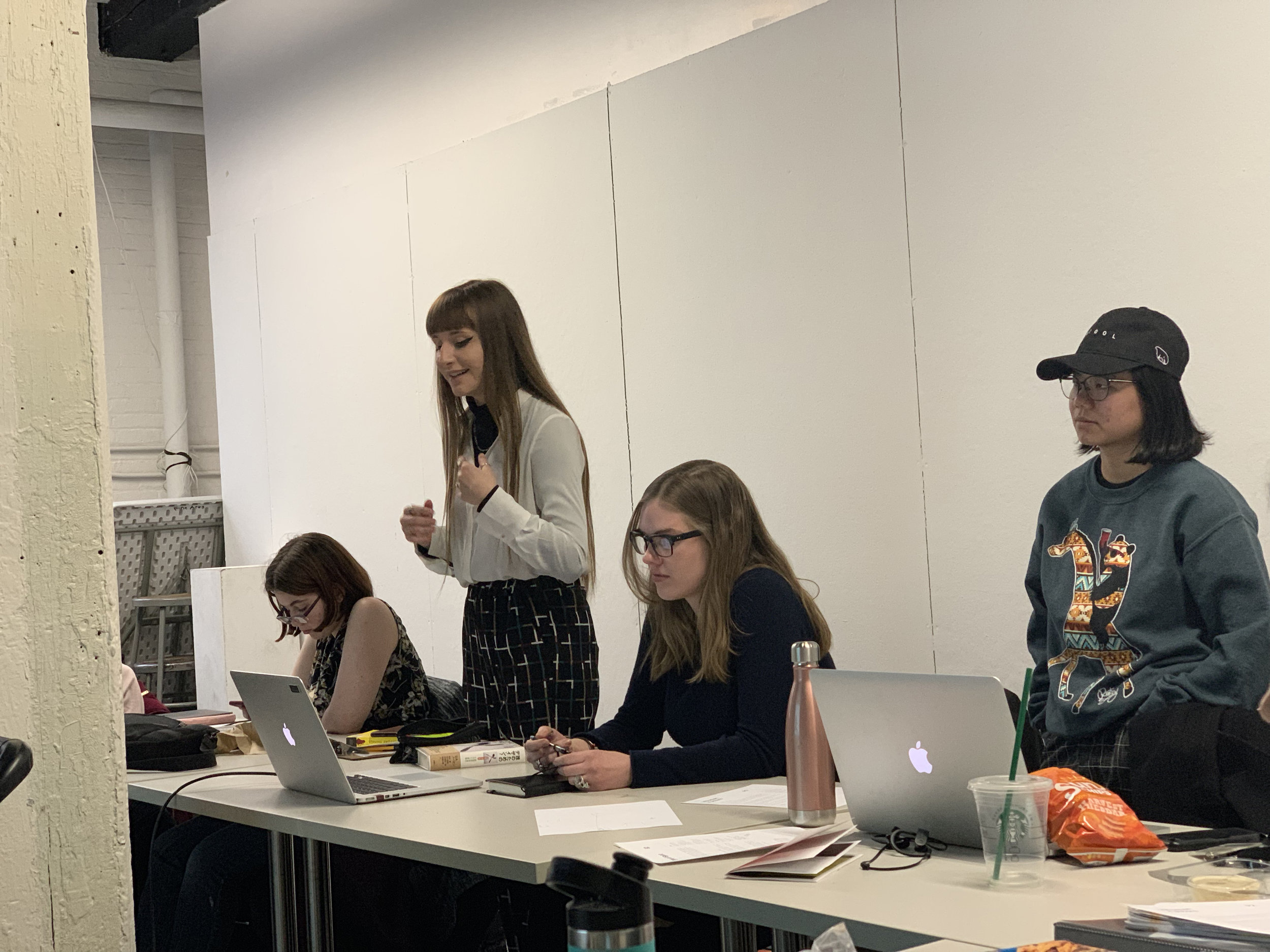Week 4 / Everyday Interaction
Great work on New Type and Everyday Interactions project! All the exercises and projects are due by the end of the semester so keep working on them and check in with your progress. But please don’t put off until the last moment and don’t forget to keep the process log for each project!
“Writing is thinking.” - David McCullough
Essay is also an essential part of the double diamond process - research, analysis x synthesis. As you write, you think and put your own thoughts and ideas toward the subject. So the design layout that is created based on the essay becomes more meaningful.
While writing an essay, please try to be more specific and descriptive with words. “Garamond is beautiful.” It is beautiful and it’s not a wrong statement. But as a designer, we need to specify the “beautiful.” Is it mathematically balanced well? Culturally rich? Aesthetically crafted perfectly? As you write, don’t just jot down what you researched about the subject. Analyze and break things down into specific points. And have your own point of view toward the subject/typeface. See how the content would do to your form and influence your design.
“Design is relationships, Design is a relationship between form and content.” - Paul Rand
We went through Daisuke’s Message Formula:
Message = (Content x Form) / Context
So if the form is bigger than the content (form-driven/style-driven), it may look good visually, but it’s usually empty, and not saying much. Both content and form have to have a respectful relationship. Keep this formula in mind!
For next week :
Project 1 Everyday Interactions :
Continue working on this. (Due by the end of the semester but please don’t put off until the last moment)
Exercise 1 New Type :
Revise your essay and zine. Develop your own theme and create a concept for your essay and zine. Booklet is more than just a book with typography, it’s also an experience design, interactive design. People actually pick up, hold the book and experience. So create a prototypes and have your friends, family, anyone actually read it. And observe how they read your zine (expression, reaction, how they read, what your design choices influence their reading experience, distance between the book and the readers, how far/close do they hold the book, what does it do in terms of experience? Is it intimate?) Observe those and take your observation back to your design.
Revise essay and zine
Create a prototype and observe readers’ experience
Exercise 2 Type of Spirit :
Select a designer and debrief/reframe the brief and start researching. Consider this as another opportunity of collaboration with the designer and means to expand your design palette. Organize your research, design philosophy, and write an essay. Develop your own theme and create your own concept. Don’t be afraid to create your own opinion about it. You may decide to work with an issue, or define a design problem or speculate something too.
Print each designer (total three) in letter size paper
brief information about the designer
his/her design philosophy
sample works (visual)
Project 2 Inhuman Factors :
Create a persona with a set of specific goals or needs, based on a real user or a fictional character. Describe his/her personality, psychological traits and everyday life. Be as detailed and illustrative as possible. Identify the objects, tools, artifacts, spaces and actions your persona is most familiar with.
Persona
personality, psychological traits and everyday life
Weekly Reading Assignment / Presenters
Hand in your answers before the class begins : https://classroom.google.com/u/1/w/Mjg0MjY0MjgwMDVa/t/all
Late submission penalty : -7 points for each week the submission is late
Design is Storytelling pg. 56-151 (Act 2&3)
Act 2 Emotion / Jocelyn Emus
Act 3 Sensation / Pam Wang
Class Presentation


